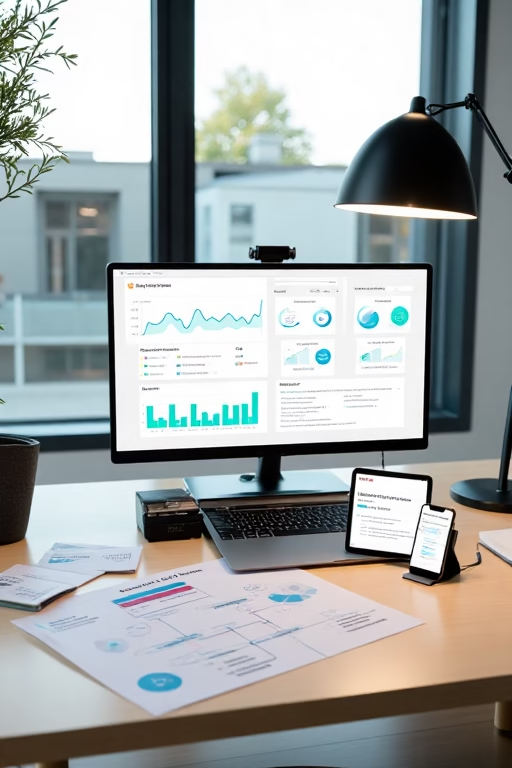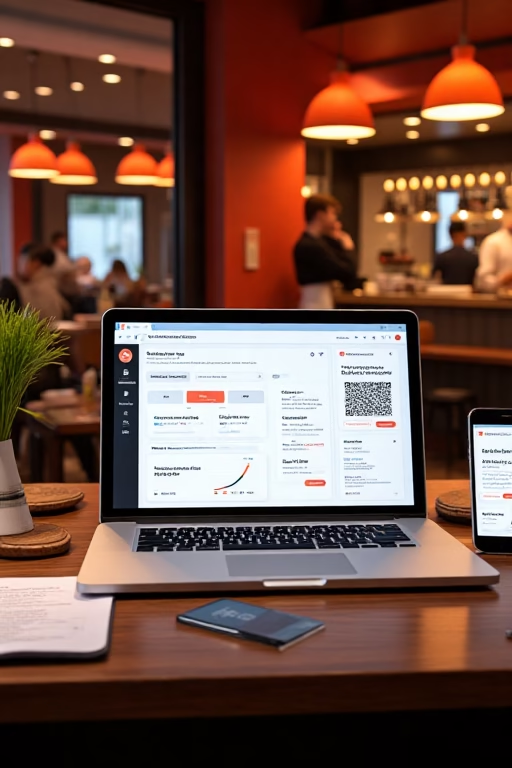How to Sell More Houses with Lead Generation: Attracting Buyers & Sellers
How to Sell More Houses with Lead Generation: Attracting Buyers & Sellers
Your Dual‑Channel Real Estate Growth Guide by Market Wiz
Table of Contents
- Introduction: Why Lead Gen Matters for Agents
- 1. Defining Your Target Audience
- 1.1 Buyer Personas: First‑Time, Move‑Up, Luxury
- 1.2 Seller Personas: Downsizers, Investors, Relocators
- 1.3 Dual‑Market Overlaps
- 2. Optimizing Your Real Estate Website
- 2.1 Clear Buyer & Seller CTAs
- 2.2 Dedicated Landing Pages
- 2.3 Search‑Friendly Property Listings
- 3. High‑Value Lead Magnets
- 3.1 “Home Valuation” Sellers Tool
- 3.2 “Instant Mortgage Estimate” Buyers Tool
- 3.3 Neighborhood Guides & Market Reports
- 3.4 Interactive Home‑Search Quizzes
- 4. Capturing & Segmenting Leads
- 4.1 Pop‑ups & Slide‑ins by Intent
- 4.2 Live Chat & Chatbot Qualifiers
- 4.3 Form Tactics: Minimal Fields & Progressive Profiling
- 5. Nurturing Buyers & Sellers
- 5.1 Email Drips for Homebuyers
- 5.2 Seller Follow‑Up Sequences
- 5.3 SMS Alerts: Open Houses & Price Changes
- 6. Converting Leads into Appointments
- 6.1 Virtual Tour Invitations
- 6.2 “Book a Consultation” Micro‑Conversions
- 6.3 Incentivized Call‑to‑Action Offers
- 7. Measuring & Optimizing Performance
- 7.1 Key Metrics & Dashboards
- 7.2 A/B Testing Headlines & CTAs
- 7.3 Feedback Loops & Continuous Improvement
- Conclusion & Next Steps
- 25 Frequently Asked Questions
- 25 Extra Keywords
Introduction: Why Lead Gen Matters for Agents
In an increasingly competitive housing market, having a reliable influx of both buyer and seller leads is your greatest asset. By mastering lead generation—from your website to your email and SMS workflows—you can maintain a steady pipeline, shorten sales cycles, and close more transactions. This guide equips you with actionable tactics to attract, engage, and convert prospects on both sides of the fence.
1. Defining Your Target Audience
1.1 Buyer Personas: First‑Time, Move‑Up, Luxury
Create profiles: budget range, desired neighborhoods, financing needs, and lifestyle preferences. Tailor messaging to each segment.
1.2 Seller Personas: Downsizers, Investors, Relocators
Identify motivations—retirement downsizing, rental cash flow, job transfers. Address pain points like timing, pricing, and staging advice.
1.3 Dual‑Market Overlaps
Spot prospects who both sell and buy simultaneously—offer bundled services and seamless transition planning.
2. Optimizing Your Real Estate Website
2.1 Clear Buyer & Seller CTAs
Separate “Get Your Home Valuation” and “Browse Listings” buttons. Use distinct colors and concise labels to reduce friction.
2.2 Dedicated Landing Pages
Build pages focused solely on buyer or seller offers—no distractions. Include testimonials and social proof to build trust.
2.3 Search‑Friendly Property Listings
Implement schema markup and user-friendly filters (price, beds, neighborhoods) to capture organic search leads.
3. High‑Value Lead Magnets
3.1 “Home Valuation” Sellers Tool
Offer instant, data‑driven estimates in exchange for property address and contact info.
3.2 “Instant Mortgage Estimate” Buyers Tool
Provide rate and payment calculators with minimal input, capturing email for full report delivery.
3.3 Neighborhood Guides & Market Reports
Craft downloadable PDFs on local school scores, crime stats, and resale values to position yourself as an expert.
3.4 Interactive Home‑Search Quizzes
Quiz: “Which Neighborhood Fits Your Lifestyle?” Collect email at the end to send tailored listings.
4. Capturing & Segmenting Leads
4.1 Pop‑ups & Slide‑ins with Intent Targeting
Display special offers when visitors show exit intent or dwell on listing pages for over 30 seconds.
4.2 Live Chat & Chatbot Qualifiers
Use chatbots to qualify queries with quick questions—rent vs. buy, budget range—and capture contact details.
4.3 Form Tactics: Minimal Fields & Progressive Profiling
Start with name and email; ask additional questions in follow‑up steps to keep friction low.
5. Nurturing Buyers & Sellers
5.1 Email Drips for Homebuyers
Sequence: welcome → new listings → financing tips → neighborhood insights → call‑to‑action for showing.
5.2 Seller Follow‑Up Sequences
Sequence: valuation delivery → staging tips → recent comps → seller testimonials → listing consultation invite.
5.3 SMS Alerts: Open Houses & Price Changes
Send short texts for upcoming open houses and immediate price reduction notifications to active leads.
6. Converting Leads into Appointments
6.1 Virtual Tour Invitations
Offer 3D walkthroughs by request; leads sign up for an email link and agent follow‑up.
6.2 “Book a Consultation” Micro‑Conversions
Embed calendar widgets in emails and landing pages to let prospects self‑schedule calls or visits.
6.3 Incentivized Call‑to‑Action Offers
“Schedule a showing this week and get a $100 home improvement voucher” drives immediate action.
7. Measuring & Optimizing Performance
7.1 Key Metrics & Dashboards
Track website form conversion rate, cost per lead, lead source, and lead‑to‑appointment ratio.
7.2 A/B Testing Headlines & CTAs
Test wording (“Get My Valuation” vs. “Instant Home Estimate”) and button colors for incremental lifts.
7.3 Feedback Loops & Continuous Improvement
Collect lead feedback on forms and surveys to refine offers; iterate monthly based on data.
Conclusion & Next Steps
By defining precise personas, optimizing your site, deploying compelling lead magnets, and nurturing through email/SMS, you’ll convert more visitors into buyers and sellers. Begin with one new magnet today, set up an automated drip, and monitor results. Refine continuously, and watch your real estate business thrive.
25 Frequently Asked Questions
1. What’s the ideal form length?
3–5 fields for initial capture; ask more in follow‑up communications.
2. How often should I email leads?
Weekly to bi‑weekly for active nurture; monthly for long‑term drip.
3. Are pop‑ups effective?
Yes—when timed by intent and offering true value, they can boost opt‑ins by 20–30%.
4. How do I avoid annoying visitors?
Limit pop‑up frequency, respect mobile UX, and provide easy close buttons.
5. Should I gate all content?
Gate only premium assets; keep basic information public for SEO and trust.
6. How do I segment buyer vs. seller leads?
Include a quick radio‑button question in your forms: “Are you buying or selling?”
7. What’s a good email open rate?
Aim for ≥25% in real estate nurture campaigns.
8. Can I use emojis in subject lines?
Sparingly—one or two to draw attention without seeming unprofessional.
9. How fast should I follow up?
Within 5–10 minutes for highest conversion rates.
10. Should I use SMS?
Yes—SMS open rates exceed 90% and are ideal for urgent alerts.
11. How do I measure lead quality?
Track lead‑to‑appointment and lead‑to‑closing ratios by source.
12. What CRM features matter most?
Automated drip workflows, lead scoring, and real‑time alerts.
13. How often test website changes?
Monthly for landing pages; quarterly for sitewide UX adjustments.
14. What tools track user sessions?
Hotjar, Crazy Egg, and Microsoft Clarity provide heatmaps and recordings.
15. How to handle unsubscribes?
Honor immediately and remove from all future communications.
16. Can I integrate chat transcripts?
Yes—capture them in your CRM to inform follow‑up and improve scripts.
17. What’s a triggered email?
An email sent automatically in response to a user action, like downloading a guide.
18. How do I optimize for SEO?
Use keyword‑rich titles, meta descriptions, and schema markup on listings.
19. Should I offer incentives?
Yes—time‑limited vouchers or free consultations drive faster action.
20. How do I track conversions?
Use UTM parameters and CRM attribution to tie leads back to campaigns.
21. What’s progressive profiling?
Collect basic info first, then ask for details in subsequent interactions.
22. How often update lead magnets?
Quarterly to keep content fresh and relevant.
23. What’s the role of social proof?
Testimonials and review widgets on landing pages can boost conversions by 15%.
24. Can I repurpose content?
Yes—turn blog posts into checklists, webinars into on‑demand videos, etc.
25. What’s the first step?
Audit your website’s CTAs and implement one high‑value lead magnet to test lift.
25 Extra Keywords
- real estate lead capture
- buyer lead magnet
- seller valuation tool
- real estate landing page
- HVAC lead generation
- chatbot for realty
- property search quiz
- email drip real estate
- SMS alerts open house
- progressive profiling forms
- neighborhood market guide
- schema markup listings
- interactive mortgage calculator
- virtual home tours
- A/B testing CTAs
- form conversion optimization
- Hotjar real estate insights
- CRM integration realty
- local SEO real estate
- pop-up intent targeting
- progressive lead forms
- exit intent offers
- lead scoring real estate
- conversion rate realty
- Market Wiz real estate
How to Sell More Houses with Lead Generation: Attracting Buyers & Sellers Read More »







